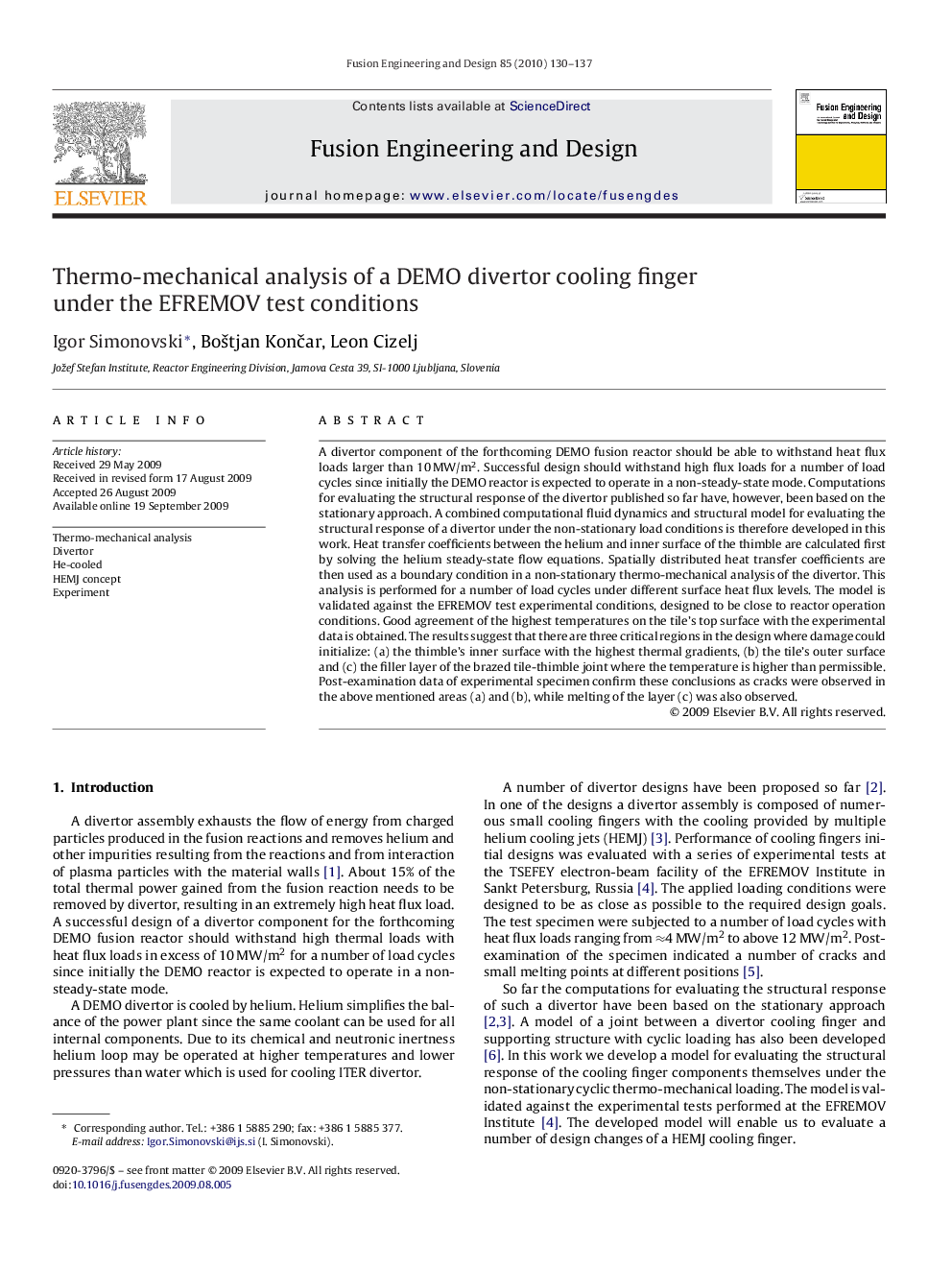| کد مقاله | کد نشریه | سال انتشار | مقاله انگلیسی | نسخه تمام متن |
|---|---|---|---|---|
| 272192 | 505015 | 2010 | 8 صفحه PDF | دانلود رایگان |

A divertor component of the forthcoming DEMO fusion reactor should be able to withstand heat flux loads larger than 10 MW/m2. Successful design should withstand high flux loads for a number of load cycles since initially the DEMO reactor is expected to operate in a non-steady-state mode. Computations for evaluating the structural response of the divertor published so far have, however, been based on the stationary approach. A combined computational fluid dynamics and structural model for evaluating the structural response of a divertor under the non-stationary load conditions is therefore developed in this work. Heat transfer coefficients between the helium and inner surface of the thimble are calculated first by solving the helium steady-state flow equations. Spatially distributed heat transfer coefficients are then used as a boundary condition in a non-stationary thermo-mechanical analysis of the divertor. This analysis is performed for a number of load cycles under different surface heat flux levels. The model is validated against the EFREMOV test experimental conditions, designed to be close to reactor operation conditions. Good agreement of the highest temperatures on the tile’s top surface with the experimental data is obtained. The results suggest that there are three critical regions in the design where damage could initialize: (a) the thimble’s inner surface with the highest thermal gradients, (b) the tile’s outer surface and (c) the filler layer of the brazed tile-thimble joint where the temperature is higher than permissible. Post-examination data of experimental specimen confirm these conclusions as cracks were observed in the above mentioned areas (a) and (b), while melting of the layer (c) was also observed.
Journal: Fusion Engineering and Design - Volume 85, Issue 1, January 2010, Pages 130–137